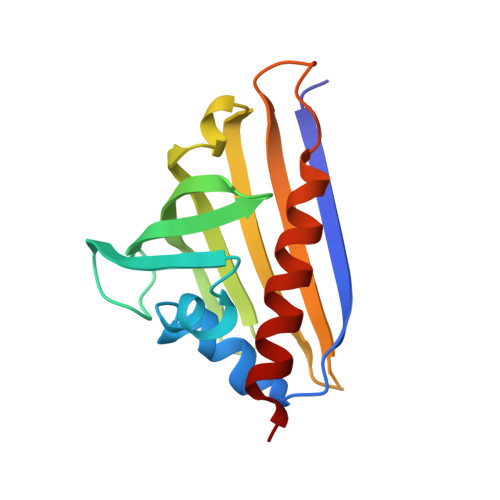Structure of ginseng major latex-like protein 151 and its proposed lysophosphatidic acid-binding mechanism.
Choi, S.H., Hong, M.K., Kim, H.J., Ryoo, N., Rhim, H., Nah, S.Y., Kang, L.W.(2015) Acta Crystallogr D Biol Crystallogr 71: 1039-1050
- PubMed: 25945569
- DOI: https://doi.org/10.1107/S139900471500259X
- Primary Citation of Related Structures:
4REH, 4REI, 4REJ - PubMed Abstract:
Lysophosphatidic acid (LPA) is a phospholipid growth factor with myriad effects on biological systems. LPA is usually present bound to animal plasma proteins such as albumin or gelsolin. When LPA complexes with plasma proteins, it binds to its cognate receptors with higher affinity than when it is free. Recently, gintonin from ginseng was found to bind to LPA and to activate mammalian LPA receptors. Gintonin contains two components: ginseng major latex-like protein 151 (GLP) and ginseng ribonuclease-like storage protein. Here, the crystal structure of GLP is reported, which belongs to the plant Bet v 1 superfamily, and a model is proposed for how GLP binds LPA. Amino-acid residues of GLP recognizing LPA were identified using site-directed mutagenesis and isothermal titration calorimetry. The resulting GLP mutants were used to study the activation of LPA receptor-dependent signalling pathways. In contrast to wild-type GLP, the H147A mutant did not bind LPA, elicit intracellular Ca(2+) transients in neuronal cells or activate Ca(2+)-dependent Cl(-) channels in Xenopus oocytes. Based on these results, a mechanism by which GLP recognizes LPA and its requirement to activate G protein-coupled LPA receptors to elicit diverse biological responses were proposed.
Organizational Affiliation:
Ginsentology Research Laboratory and Department of Physiology and Bio/Molecular Informatics Center, College of Veterinary Medicine, Konkuk University, Seoul 143-701, Republic of Korea.















